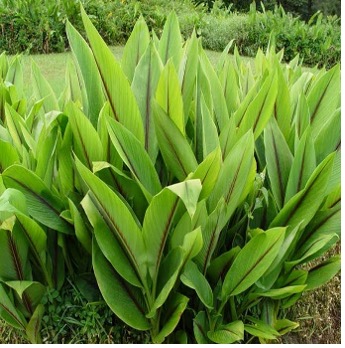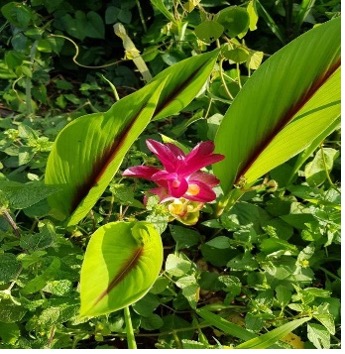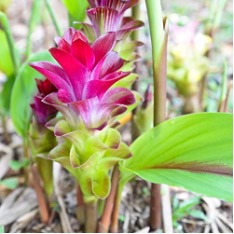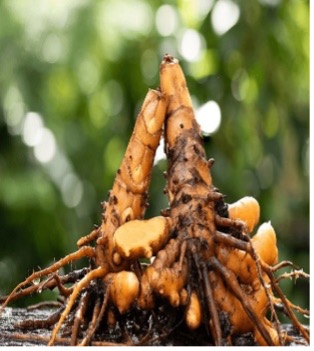HERBAL GARDEN
Vivek college of Ayurvedic Sciences & Hospital Bijnor UP
कचूर हल्दी




Classification
Synoyms
Karchura
Shati
Kachura
Kapoor Kachri
Dravanti
Habit
Perennial herb with underground rhizome.
Habitat
Found in tropical and subtropical regions, Widely cultivated in India, especially in eastern and southern states. Grows in moist, loamy soils with good drainage.
Morphology
- Grows up to 1 meter in height
- Long, lanceolate leaves with reddish midrib
- Flowers are pinkish or purple, emerging from a separate floral stalk
- Rhizomes are large, aromatic, pale yellow to white inside, with a camphoraceous odor
Chemical Composition
Essential oils (curzerenone, curdione, zedoarone, borneol, cineole)
Curcuminoids
Starch
Flavonoids
Sesquiterpenes
Gum and resin
Tannins
Guna-Karma
Rasa- Tikta (bitter), Katu (pungent)
Guna- Laghu (light), Ruksha (dry), Tikshna (sharp)
Virya- Ushna (hot)
Vipaka- Katu (pungent)
Karma- Deepana, Pachana, Krimighna, Shothahara, Lekhana, Varnya, Kandughna
Doshakarma- Kapha, Vatahara
Medicinal uses
Useful in digestive disorders, flatulence, loss of appetite.
Treats skin diseases, itching, and inflammation.
Effective in respiratory issues like cough and cold.
Used in wound healing and as an antiseptic.
Traditionally used in dental issues, menstrual pain, and joint pain.
Acts as a natural deodorant and complexion enhancer.
Useful Part
Rhizome
Doses
Powder: 1–3 g
Fresh paste: for external application
Juice: 5–10 ml
Important Formulation
Shat Kachura Churna
Kachuradi Lepa
Kachura Taila
Shloka
शठी कटू तिक्ता हिता कफवातनुत् |
दीपनी कुष्ठकृमिहृद्रोगार्शःप्रशान्तिकृत् ||
(भावप्रकाश निघण्टु हरितकी वर्ग)
Hindi Name
कचूर हल्दी / शतकचूर
English Name
Zedoary / White Turmeric
Botanical Name
Curcuma zedoaria Roxb.
Family
Zingiberaceae